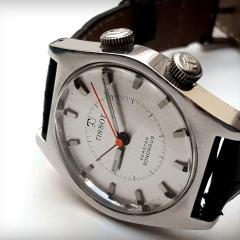Using A Eta 2836-2 For A Gmt Application
-
Recently Browsing
- No registered users viewing this page.
-
Topics
-
Posts
-
Thanks Mark, I contacted the seller to see if they have any more info on separating the case.
-
Hi all, I've engaged here a couple of times over the years but never introduced myself. I've been restoring vintage timepieces for 15+ years and focus mostly on 1940s-1980s wristwatches. The farther gone it is, the more I enjoy bringing it back to life. Every now and then I come across something uncommon that I want to share that others my find interesting. Or sometimes I come across a challenge that I haven't run into before, so I enjoy reaching out to others who I can learn from. Best, g2w
-
Very interesting! I answered the mail from Longines, explaining that I was a bit disappointed and that I wouldn't ask for a costly confirmation for a watch which isn't a high-end one ... and I received another email explaining that they couldn't not certify the authenticity of the watch, but they could specify that, according to the serial number on the caliber and to their handwritten records, the watch was produced in 1938. Great! @Mercurial I will take the measurements and will keep you informed. Thank you all. This forum is incredible 👍
-
Good stuff, thanks!!! I'm going to save it and re-read your post and watch the video again. I have a few follow-up question: My understanding is that the spring vibrates or breathes between the the two regulator pins. When the pins are fully open the effective spring length is from the stud and theoretically no rate adjustment can be made by moving the regulator arm. As the pins are closed the spring gets closer to one side of the regulator block but doesn't touch a pin. You can still move the regulator carrier the entire terminal curve without upsetting the coils. The rate can now be adjusted using the regulator because the effective spring length can be modified. My question is: Does the hairspring bounce off and touch one of the pins as it breathes? Is that why the effective hairspring length is adjusted by moving the regulator? And follow-up: How is amplitude affected by the spring between the pins? Does fully open pins, dial up position = max amplitude? When spring adjusted to 1/2 width still = max amplitude? When I have crown down gravity is pulling the spring against one of the pins and I would expect rate to go up and amplitude to go down. Is that correct?
-
A quick Google for Longines 25.17 found several similar watches - like this one with writing on the case back similar to yours https://benjaminmarcello.nl/product/longines-cal-25-17-tank-from-1938/
-




Recommended Posts